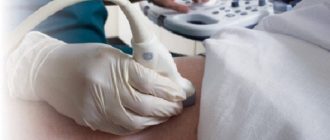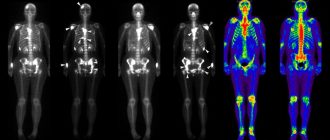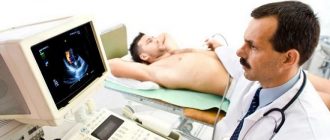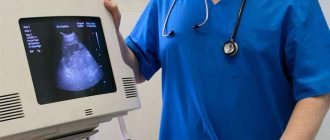Microscopy of prostate secretion is a fundamental instrumental examination that allows us to identify the presence of pathology in the organs of the genitourinary system in an adult man. To perform it, you need to collect prostate juice, after which it is examined under a microscope for the presence of bacteria and other indicators. The procedure is indicated for symptoms of prostatitis and suspected infertility. The results obtained are compared with normal values, which makes it possible to determine the presence of pathologies and prescribe additional studies.
Objectives of the study
Microscopic examination of prostate secretion is a procedure aimed at studying the cellular structure of prostate juice, its composition, the presence of pathogenic microorganisms and foreign particles. All this makes it possible to identify the presence of inflammation and determine its nature - infectious or non-bacteriological (stagnant). In case of infectious inflammation, microscopy of prostate secretion will show the presence of one or more possible pathogens:
- Staphylococcus.
- Enterococcus.
- Pseudomonas aeruginosa.
- Klebsiella.
- Escherichia coli (Escherichia).
- Gonococci.
- Trichomonas.
- Fungal mycelium.
Microscopy of prostate juice also examines physical parameters and other indicators that make it possible to determine pathology or prescribe additional examinations, including:
- The amount of fluid released when collecting material.
- Color, smell, density and acidity of the secretion.
- Presence of mucus impurities.
- Presence of epithelial cells.
- Presence of leukocytes.
- Presence of red blood cells.
- Presence of macrophages and giant cells.
- Density of lecithin grains.
- Amyloid bodies.
- Crystallization pattern (Bötcher crystals).
Indications
A microscopic examination of prostate secretion is prescribed if you complain of the following symptoms:
- painful sensations when urinating, too frequent urge to urinate, small amount of urine, feeling of incomplete emptying;
- pain in the groin and perineum;
- discharge from the head of the penis;
- sexual dysfunctions, decreased potency, discomfort during ejaculation;
- suspicion of infertility.
Contraindications
There are some limitations to the procedure for collecting material for analysis:
- with damage to the anus;
- high body temperature;
- acute inflammatory processes;
- presence of hemorrhoids;
- prostate tuberculosis.
Under these conditions, only sperm culture is carried out and instrumental examination methods are prescribed.
Preparation process and material collection
Before taking material for analysis, you must adhere to some requirements:
- stop eating 10 hours before the procedure;
- 3 days before submitting the material for analysis, you must abstain from sexual intercourse;
- do not drink alcohol for 2-3 days;
- Avoid visiting saunas, baths, and hypothermia.
An enema will be given before taking the material. It is also necessary to empty your bladder. To begin collecting material, the subject should take one of the positions in which access to the rectum will be as comfortable as possible. Using palpation, the doctor stimulates the prostate through the rectum, after which prostate secretions are collected on a glass slide and sent to the laboratory. To get more accurate results, you will then need to take a urine and urethral discharge test.
Decoding the results
Decoding the analysis of prostate secretion does not serve as an accurate indicator of a particular disease, but judging by the deviations in indicators, the presence of pathology and subsequent examinations can be determined.
In addition, microscopy of the secretion is performed again after some time. This makes it possible to compare the results and understand how the disease progresses. Interpretation of the examination results occurs when compared with normal indicators:
| Parameter | Normal indicator | Possible violations |
| Secret volume | From 0.5 to 2 ml | A small volume indicates prostatitis, and an increased volume indicates congestion. |
| Color | Transparent with a white tint (but not completely white) | A deep white or yellow color indicates inflammation. Red color indicates blood impurities. |
| Smell | The characteristic smell of sperm | Differences in smell will indicate a change in the composition of the secretion. |
| Density, g cubic. cm |
1,022 | Any other value indicates pathology |
| pH of the environment | 7,0 +- 0,3 | A more alkaline reaction (from 7.3) allows for the presence of chronic inflammation, a more acidic reaction (below 6.7) for prostatitis |
| Red blood cells | Absence or insignificant amount | Present in cancer, acute or chronic inflammation |
| Epithelial cells | No more than 2 in sight | Flat epithelium lines the ducts of the gland, but if its quantity increases, one can conclude that the organ is inflamed. If leukocytes also exceed the norm, this indicates the presence of a malignant formation. |
| Leukocytes | From 0 to 10 in the field of view at 280x magnification, 0-5 at 400x magnification | An increased amount indicates the presence of inflammation |
| Macrophages | Absence or quantity no more than 3 | Higher scores indicate inflammation |
| Giant cells | Absence | The presence indicates congestion or chronic prostatitis |
| Amyloid bodies | Absence | Amyloid bodies in the prostate secretion increase with stagnation of blood, seminal fluid, adenoma or hypertrophy of the gland |
| Lecithin grains | 10 million per 1 ml | A smaller number indicates prostatitis |
| Crystallization pattern | Persists (fern syndrome) | Violation or absence indicates pathology |
| Fungi | Absence | Presence may be a sign of prostatitis |
| Bacteria | Microflora is absent or present in small quantities | Detection of staphylococci, Klebsiella, Pseudomonas or Escherichia coli indicates a bacterial infection in the prostate |



